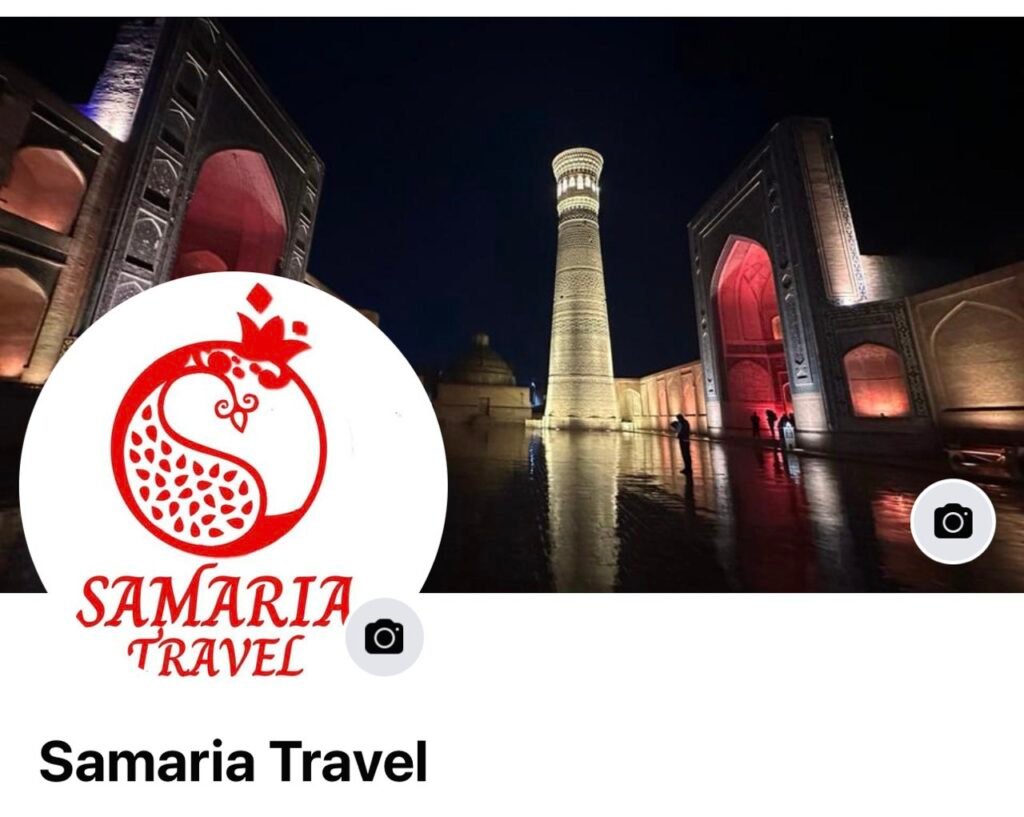
Discover Uzbekistan Tour in Two Weeks with yurt stay, exploring its most iconic cities and experiencing the magic of the Silk Road. Your journey begins in Tashkent, the vibrant capital, where modernity meets rich history. Next, travel to Samarkand, home to the breathtaking Registan Square and ancient Timurid architecture. Continue to Bukhara, a city of mosques, madrasahs, and bustling bazaars, before heading to Khiva, an open-air museum with well-preserved medieval walls. For a unique cultural experience, enjoy a yurt stay in Yangigazgan, where you’ll witness the vast Kyzylkum Desert, ride camels, and experience nomadic life under the starry sky. This unforgettable tour offers a perfect blend of history, culture, and adventure!
Day 1: Tashkent arrival. Welcome to Uzbekistan.
Check in after 14:00 (early check in upon request)
Day 2: Tashkent city tour
Tashkent is the capital of Uzbekistan and has approximately 3 million inhabitants. The city is located in the north eastern part of the republic, in the valley where the river Chirchik is located. In the North of Tashkent the snow-covered tops of Big and Small Chimgan mountain can be seen. Tashkent is the fourth largest in the Commonwealth of Independent States after Moscow, St Petersburg and Kiev.
Visiting places:
State Museum of Applied Art
Earthquake Memorial
Khazrati Imom Complex (XVI-XX centuries) the historical spiritual heart of the city
The market Chorsu
Metro riding
Day 3: Tashkent—Urganch flight
Day 4: Khiva city tour
Khiva, one of the most ancient cities of Central Asia, has a 2500-year-old history. Khizauv “Fort”, Kheykanik (the name of canal which run in the area), Kheykanik, Kheyvak and Khiva are some the names given to this unique city.
Ichan Qala Fort— is a UNESCO World Heritage site since 1990. Present day Ichan Qala is open-air museum. It represents the old part of the city, surrounded with wall and turned into the State Historical Archaeological Museum. The area of Ichan Qala is 26 hectares. The feeling in Inner Fortress transfers people into the past in a city with narrow lanes, low houses, mosques, mausoleums and madrassahs (Quran or Koran schools).
Day 5: Khiva to Bukhara transfer
Transfer from Khiva by car crossing the river Amu Darya (in the antique called Oxus) and the desert Kizilkum.
Day 6: Bukhara city tour
Bukhara, one of the most ancient cities of Central Asia, has a 2500-year-old history. Bumichkat “New Castle”, Al Madina as-sufriyya “Copper City”, Madinat at-tujjor “City of Traders”, Foxira “Honorable City” are some the names given to this unique city.
Visiting places:
Labi Hauz Complex
Trading domes
Magoki-Attari Mosque
Poi Kalon complex (“The foot of tall” in Uzbek) from XII-XVI centuries
Bolo Hauz mosque (XVIII century)
The Citadel Ark (I-XX centuries)
Day 7: Bukhara free time or purchase a half day optional tour
Visiting places of optional tour:
Chor Minor
The summer palace of Bukhara’s emirs
Naqshbandi Sufism complex
Day 8: Bukhara—Nurata—Yurt stay
After breakfast check out from the hotel and transfer to town Gijduvan The town Gijduvan located 45 km from Bukhara and still has got its own pottery school. Have sightseeing in pottery centre where they make bowls and dishes in traditional floral designs of local browns and yellows. Masters are happy to give demonstration of their art.
After pottery workshop continue to drive and stop in Nurata town. Nurata (“Nur means Light or Holy and Ata means Father”), this ancient town held a strategic position on the frontier between the cultivated lands and the steppe. Population of the town is 32,000 people and renowned for marble and astrakhan for production, Nurata has retained some of the holy sites that attracted pilgrims from all over Central Asia. Visit remains of fort Nur, local people refer that fort was built by Alexander the Great in 4th century BC.
After sightseeing drive to Aydarkul Lake. Lake Aydarkul was created in 1969, when catastrophic springfloods made people drain excess water from the Syrdarya River into the Arnasay depression. Since then Aydarkul has been steadily growing in size. Nowadays lake covers an area of 4,000 square kilometers. Then drive to Yangi Kazgan village and accommodation in Yurt.
Day 9: Yangi Kazgan (Yurt) — Samarkand
Do not miss a chance to take a picture of stunning sunrise. After breakfast riding a camel in a Kizil Kum Desert (“Red Desert” in Uzbek), it is the 15th largest desert in the world and spreads across northern Uzbekistan and up into neighbouring Kazakhstan.
After camel riding transfer to Samarkand. Arrive in Samarkand and check in to the hotel.
Day 10: Samarkand city tour
Samarkand, one of the most ancient cities of the world, a contemporary of the Rome, Athens and Babylon, has a 2750-year-old history. “The Mirror of the World”, “The Garden of the Soul”, “The Jewel of Islam”, “The Precious Pearl of the Moslem World” are some the names given to this unique city. In ancient Greece, this city was known as Marakanda.
Visiting places:
Gur-Amir mausoleum
Registan square
Bibi Hanim
Ulugbek Observatory
Complex Shahi Zinda
Day 11: Samarkand— Shakhrisabz—Samarkand
Beyond Samarkand, the road to the south, through Zarafshan Range, a Pamiri spur, towards the Takhtakaracha Pass. Along this major Silk Road branch marched the armies of the Greats, Alexander and Amir Temur, en route to India. In 1395 Amir Temur ordered a palace and garden built here, between his imperial capital and his birthplace Shakhrisabz, 90 kilometers south. The road passes through villages, resting in the shade of white acacias, Persian walnut, pine and plane trees. The peak of the pass is more than 1620 meters in elevation and in a clear day after the peak of the pass there is a spot of fine panorama of the town Kitob of Kashkadarya province.
The sightseeing in Shakhrisabz city:



